A Royally Candid Interview with The Crown's Emma Corrin, Josh O'Connor, and Emerald Fennell
“It’s a legendary story, this one,” says Josh O’Connor, flashing a sly, dimpled smile. The British actor, who plays Prince Charles in The Crown, then launches into the serendipitous details—not of the real life love triangle involving Charles, Camilla Parker Bowles, and Lady Diana Spencer, which drives so much of the drama in the series’s fourth season, but rather of the day of auditions that led to the casting of an unknown actress to play one of the most iconic women of the 20th century.
The story begins in 2018, as the third season of The Crown was getting underway. The casting team was on the hunt for their Camilla and brought in O’Connor to read with a few front-runners. They hadn’t started their search for Diana yet, as her character wouldn’t make an entrance until the following season. But they needed a warm body to run her lines.
Emma Corrin, then just 22 years old, got the call through her agent, who stressed that it was not an audition. “But, obviously, I was like, ‘I’m going to prepare as if it were,’ ” Corrin says. Without the benefit of a hair, makeup, or wardrobe department, Corrin focused on what she had: her voice. She analyzed Diana’s speech patterns with the help of her mother, a speech therapist. “No matter what Diana is saying, it kind of goes down at the end,” Corrin says, slipping into the hauntingly similar imitation that makes her so believable. “It’s like a sadness.”
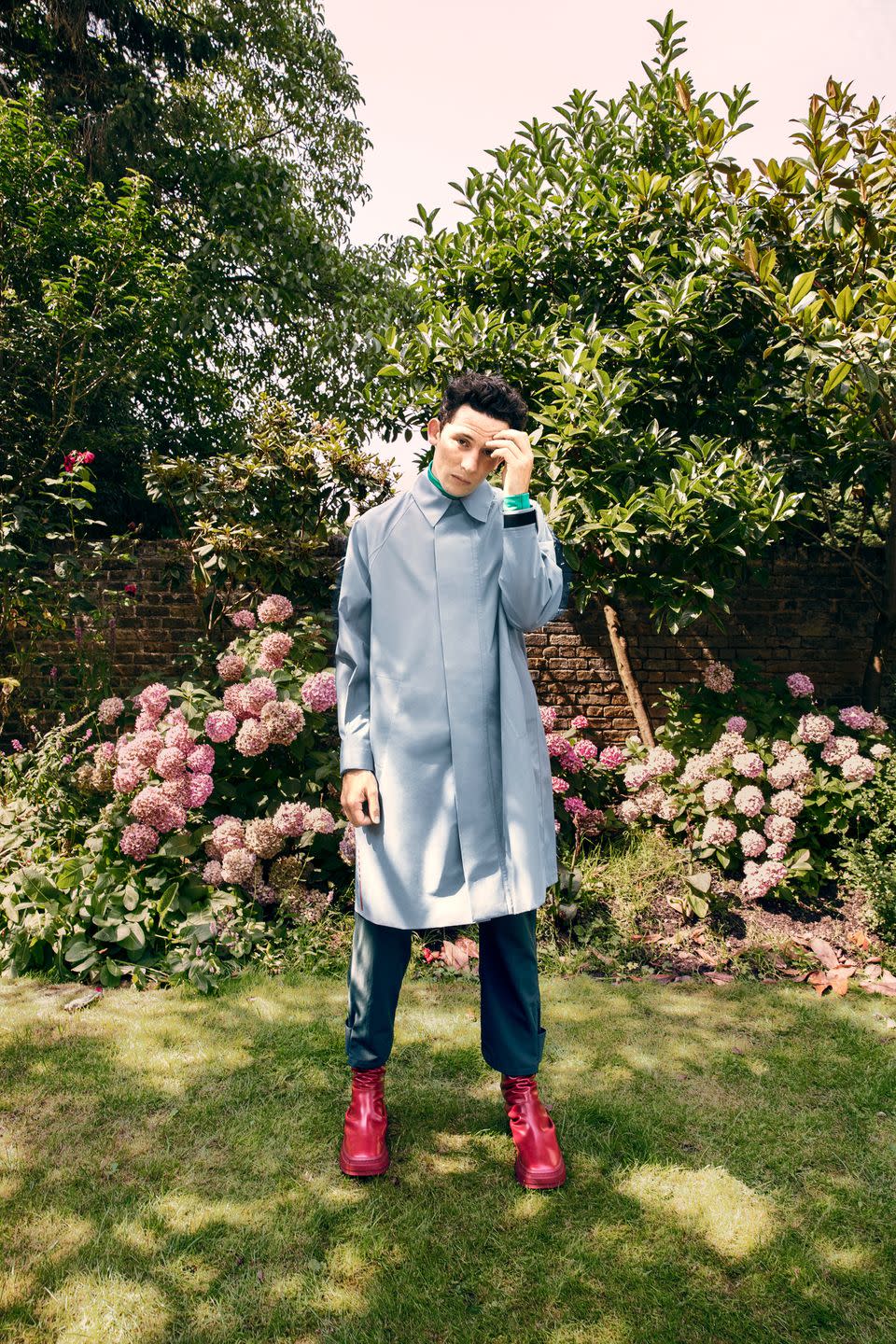
Corrin was a toddler when Diana died and has no memory of her. Stepping into the casting room that day, she also had no experience acting on television. And yet she captivated the crowd. “I was in awe of her,” O’Connor tells me. “This young actress who hadn’t done an awful lot, and here she was inhabiting Diana, seemingly quite easily.” The Crown’s creator and writer Peter Morgan was entranced too. For Diana’s debut into his award-winning Netflix series, Morgan wasn’t looking for someone to play the global superstar she eventually became; he needed the fidgety 19-year-old girl to whom the Prince of Wales proposed. “We spent our whole time just staring at this woman reading the lines going, ‘Wow, she’s kind of perfect,’ ” Morgan says.
Zooming with Corrin from some 5,000 miles away, I feel that too. Perched in front of a tree-filled window in her London home, she often leans so close to the screen that her forehead is cut off. Her white tank top and cutoff jean shorts are paired rebelliously well with blue gemstone statement earrings, a nod to the princess’s sapphire engagement ring. “I hate being asked what it’s like to play someone iconic,” Corrin says (though, for the record, I hadn’t). “It makes her untouchable—the whole point was that she was touchable.”
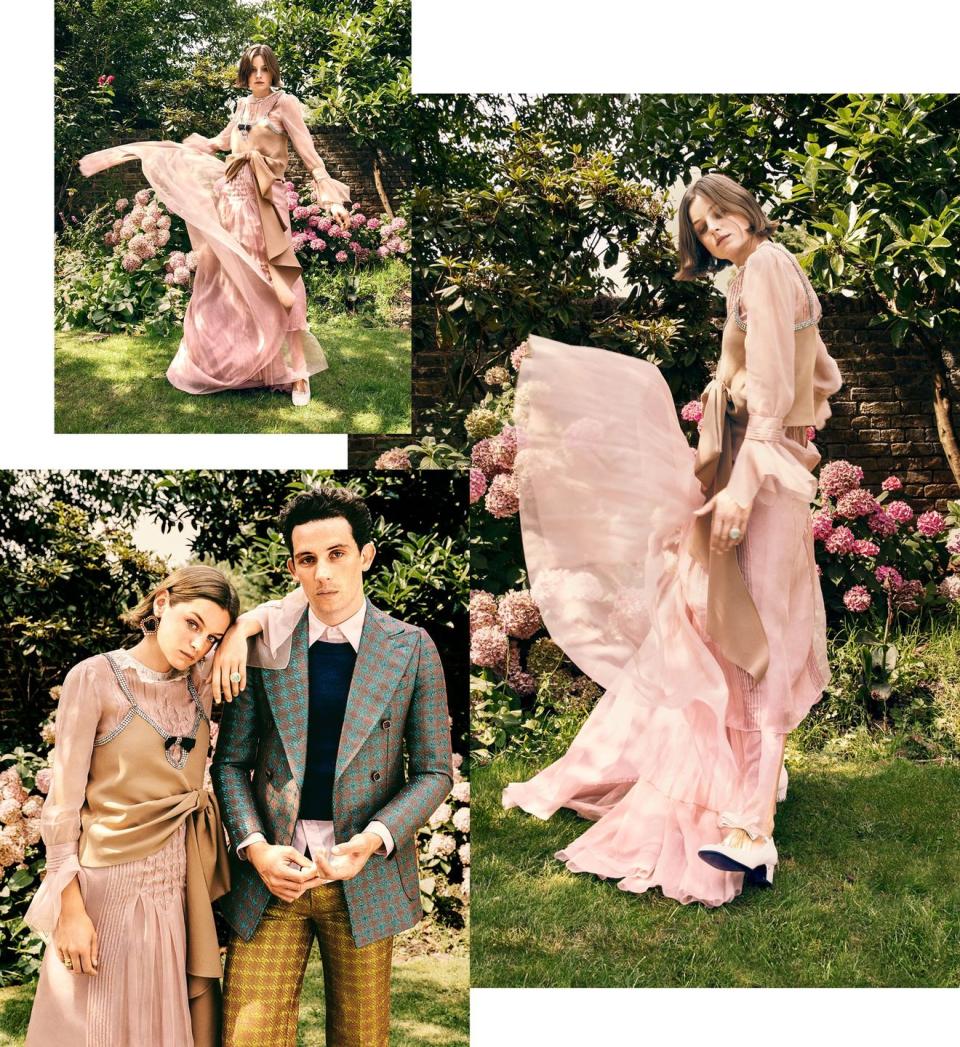
Although Corrin impressed the Crown team on that first day, she wasn’t given the part straight away; an extended courtship was required. It took eight months for director Ben Caron to make her an offer. “It was the most exciting proposal I’ll probably ever receive in my life,” Corrin says. To celebrate, she got a blue merle cockapoo and named him Spencer.
Corrin had another six months to prepare, and a team ready to help. The show’s movement coach, Polly Bennett, worked with her on abstract Diana concepts, like how the princess might stand in a doorframe (centered, leaning on one side) and what kind of animal she might be (not a deer in the headlights, as Corrin first thought, but a cat: curious, composed, a bit calculating). Still, it was Corrin’s newcomer status that proved the most useful on set. “If we had gotten an experienced actress, it would have been an actress acting being nervous,” Morgan says. “Trust me, Emma was nervous on every day that we were filming,” calling it “enormously helpful.”
The Crown’s fourth installment spans the 1980s, a transformative decade for the British royal family largely because of Diana. But the People’s Princess is not the framework for these 10 episodes. Once again Morgan centers the season on the prime minister at the time, Margaret Thatcher. As divisive a figure as Thatcher was, the approach poses some new challenges. “When you’ve got Charles and Diana as a narrative, everything else feels a bit like eating vegetables, right?” he says. “The other narratives are necessarily going to be slightly more tired.”
Well, not entirely. The series is known for recasting its stars every second season, which allows multiple narratives to keep crackling past what could have been a sell-by date. Consider too that the story has progressed to the point where the principal players are now well into middle age; having new actors appear every other season lets The Crown embrace this stage of its characters’ lives. Helena Bonham Carter, who returns as Princess Margaret, welcomes the chance to carry the troubled spare into her fifth decade. “It’s so nice to be employed and [able to] show off our age,” the 54-year-old says. Olivia Colman reprises her role as the queen with more gray at her temples and a simmering impatience. “It’s nice to play a little bit of bitterness, a little bit of jealousy,” Colman says. “All of these emotions which are much more interesting than—”
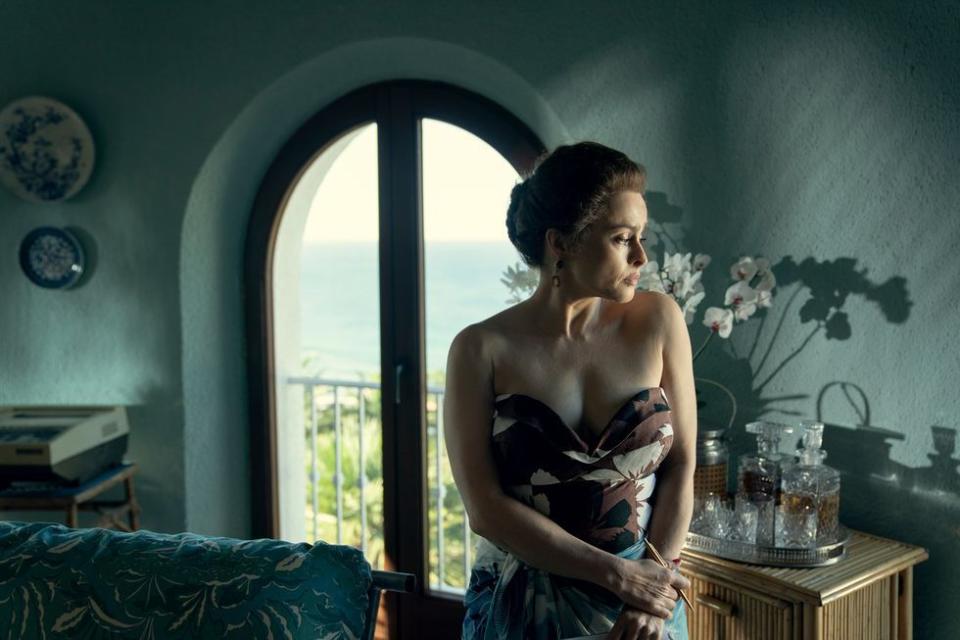
“Innocence,” Bonham Carter interjects. “Youth? Overrated!”
Season four takes The Crown into new territory—in that it will be familiar territory. The events it covers are recent enough that many of us have lived them, and obsessed over them, in real time. There is Charles and Diana’s courtship and historic undoing, but also episodes dedicated to the Falklands War and sanctions in South Africa. Morgan spends a year writing each season, working with a team of five researchers. “When people say we get things wrong, we’re like, ‘We did not get things wrong! We chose what happened,’ ” says Annie Sulzberger, head of the research team. The fudging that usually happens is that timelines get condensed for dramatic effect.
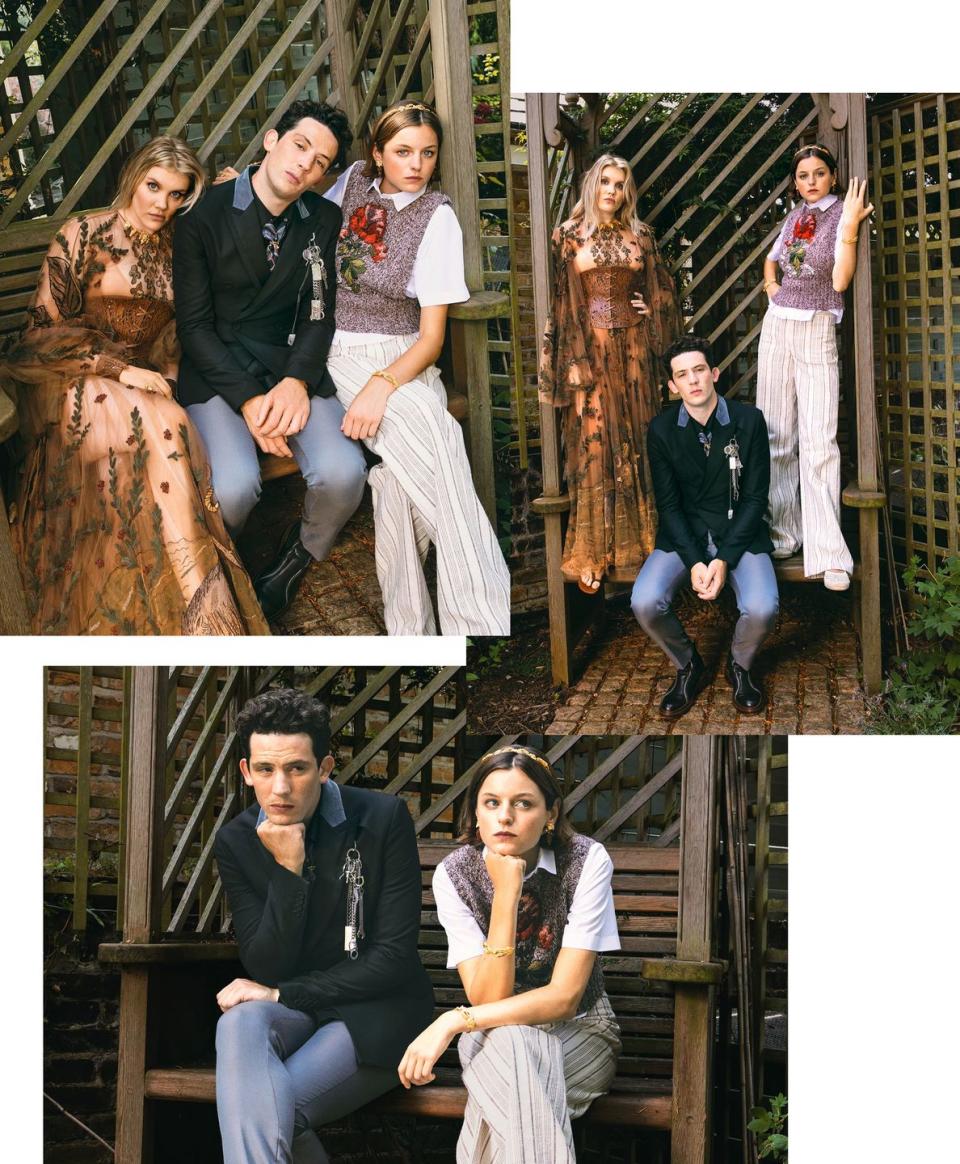
Still, the popularity of The Crown has given the series a profound responsibility, shaping these historical events for a new generation. The show is a dramatization, not a documentary, but it is often received as mostly fact. This season, in particular, will be shocking to younger viewers unfamiliar with Charles and Diana’s story, and just how ugly things got.
Speaking of ugly, it’s impossible to watch Diana’s entrance and attempts to acclimate without thinking of the treatment of Meghan Markle. Besieged by racist tabloids and reportedly unsupported by the royal family, Prince Harry and his bride left their roles as senior working royals last spring. This was not the Firm’s finest year, nor is this season of The Crown the kindest portrayal. Diana is embraced at first, but then she is ignored, laughed at, and scolded. In the third episode she moves into Buckingham Palace and desperately tries to connect with her family-to-be. Diana joins the group for a black tie dinner, only to be stopped with a wagging finger by Charles. She apologizes and curtsies to the queen, and then dizzily makes her way around the circle to greet them in the proper order. Later come elocution lessons, with a rope tied around Diana’s waist to keep her from moving her arms while speaking. Her anguish is illustrated by her bulimia, seen in several painful scenes of bingeing and purging.
“The coldness, the traditions, and the expectations of behavior…I don’t think she expected that,” Corrin says. “I think she expected to join a family.” As for the situation today, the actress sees some parallels. “You just want to shake these tabloids and say, can’t you see history repeating itself?”
Margaret Thatcher lends her own perspective on the Windsors during a disastrous weekend of shooting at Balmoral. “What am I doing here?” snarls the sublime Gillian Anderson, in full Thatcher garb. “They aren’t sophisticated or cultured or elegant or anything close to an ideal. They’re—” “Boorish, snobbish, and rude?” her husband offers.
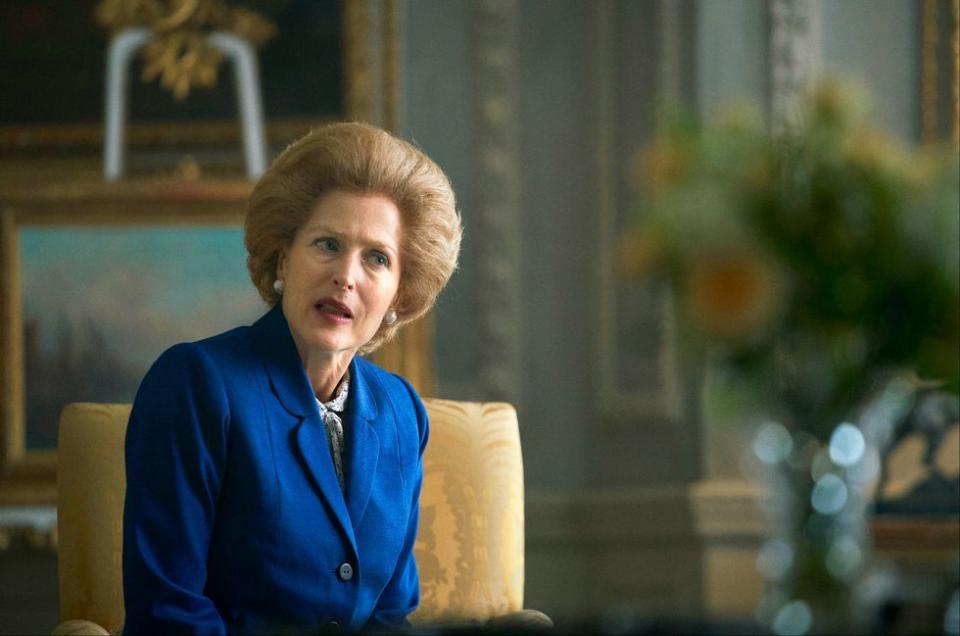
Thatcher’s years as prime minister, 1979 to 1990, turn this season of The Crown into a study of women in power: what they do with it and what it does to them. Anderson’s Thatcher “was like having a ghost around,” Bonham Carter says. You can tell Morgan delighted in the dichotomy Thatcher embodied as the first female prime minister. “She would go to cabinet every day and beat every one of her male colleagues into pulp,” he says. “And then she would go home, iron her husband’s shirts, and make him his supper.”
Meanwhile at Buckingham Palace, the queen’s attention begins to shift to her adult children. Charles, Anne, Andrew, and Edward are all adrift in ways that seem selfish and unseemly. Her involvement in Charles’s marriage grows alongside the couple’s unhappiness, culminating in some damning lines and one memorable hug. For Corrin it was a master class in getting into character. “Obviously, Olivia is the biggest ray of sunshine ever,” Corrin says. That is, until the director yelled, “Action!” “She just went stone cold horrible,” Corrin says with a nervous laugh. “It was so hard to not take it personally.”

The exchange comes toward the end of an episode devoted to Charles and Diana’s 1983 tour of Australia. Nearly two rocky years into their marriage, they decide to give it a real go and work together as a team. Their attraction is undeniable, but then Diana’s popularity soars and Charles can’t bear it. O’Connor recalls filming a scene where the script called for an extra in the crowd to ask about Diana’s whereabouts. “She’s busy working, I’m afraid. You’ll just have to put up with me,” he says. In one take the extra then ad-libbed, “But you’re rubbish”—much to everyone’s surprise. “That’s a little bit harsh,” O’Connor says with a grin. And yet, not wrong.
Speaking by Zoom, O’Connor, wearing a weathered white T-shirt, with a hint of scruff and tousled curls, is the antithesis of the reserved, composed prince. O’Connor isn’t a royalist by any stretch; at one point he forgets the name of the queen’s youngest son (it’s Edward). Nor is he familiar with the drama of the current young royals. When a Los Angeles–based friend told him Harry and Meghan had moved there, O’Connor remembers thinking, Who’s Harry? Is that a friend of mine?

His Prince Charles last season was notable for how sympathetic he was, but “troubled” is how O’Connor describes his character in season four. In one episode he growls to Anne, “Honestly, there’s nothing more exhausting than putting on a kind face. I never realized how much scaffolding a smile required.”
Charles is trapped in a marriage his mother is holding him to, no matter how often he tries to plead his case. O’Connor gets cut off by Colman so many times it became a joke among the cast. But the prince maintains his restraint until the final episode, when he explodes at Diana, calling their marriage, in two painfully perfect words, a “grotesque misalliance.”

Emerald Fennell completes the love triangle as Camilla Parker Bowles, a role she’d been eyeing since The Crown began. “One day they’re going to want Camilla,” she told her agent. “Will you make sure that I get to go in?” Fennell auditioned twice. The first time, which she describes as a “terrible, terrible mess,” was in the midst of filming Killing Eve, for which she served as head writer and executive producer. (Promising Young Woman, Fennell's debut feature film as a writer-director, will be out this winter.) Later she was called back, on the day Corrin joined too. Morgan says Fennell won them over immediately. To get into character, Fennell returned to smoking. “There’s a personality type I think that goes with it,” she says, describing Camilla as “languid, but actively so.”
As Fennell muses about her urge to give the maligned mistress a fair shake, it strikes me that the real Duchess of Cornwall is lucky to have Fennell standing in her sensible heels. The actress clearly feels a kinship to the woman who resisted the Firm. “She’s the only person who didn’t want it and wasn’t impressed by it,” Fennell says. Her portrayal is more than fair, it’s exceedingly human. Camilla is in love and up against the most adored woman in the world. The real life events were messy, and Fennell welcomes the chance to explain a bit. “Even if people behave badly,” she says, “you understand why they have.”
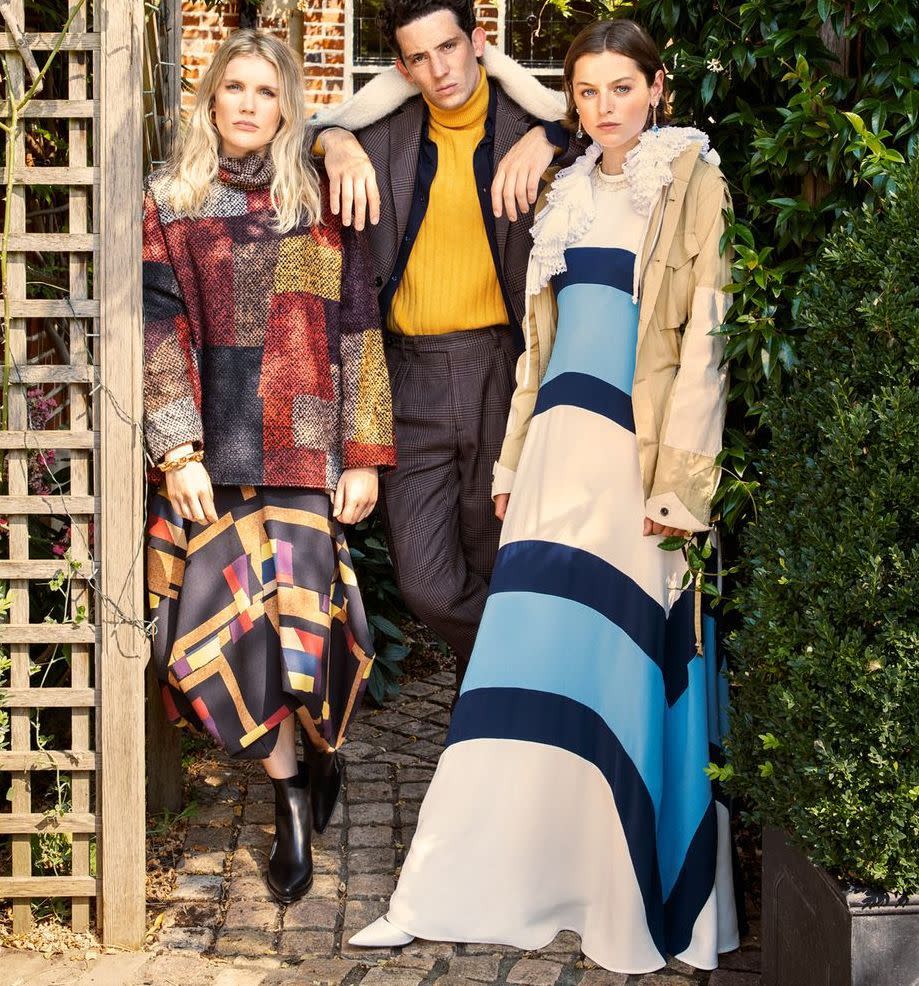
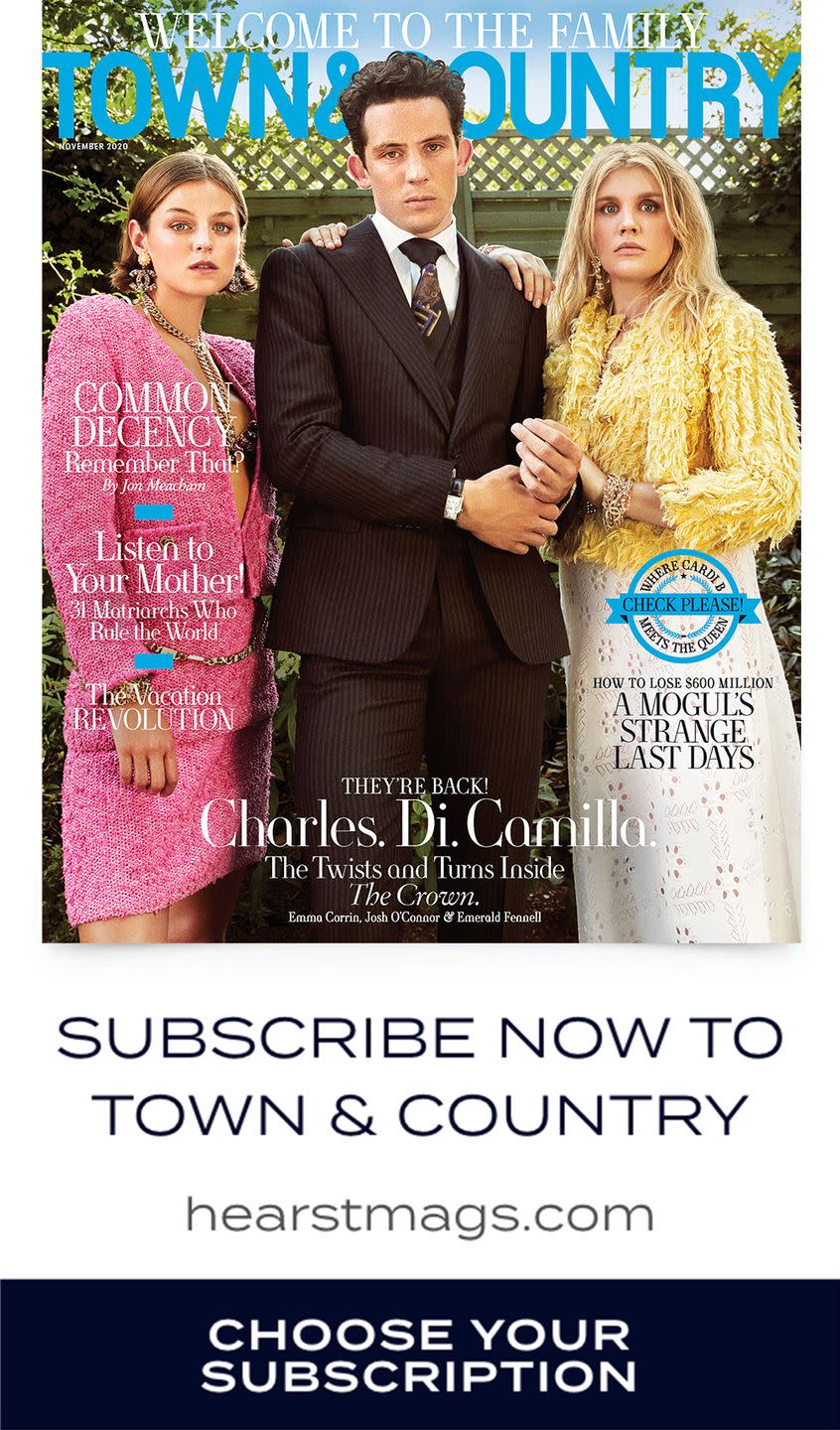
Fennell and Corrin share just one scene, a painful-to-watch lunch at which Diana realizes the extent of Camilla’s entanglement, and Camilla grasps how unfamiliar Diana is with her fiancé. “Darling, you really know nothing, do you?” Camilla asks. When it comes time for the check, Diana suggests they split it. “Good idea,” Camilla says with a smile. “I’m all for sharing.”
The trio of Fennell, O’Connor, and Corrin originated these roles, but now it’s time to hand them off to new actors for the final seasons. Although Morgan initially said the fifth installment would be the last, the show has since expanded to a sixth, focused on the administrations of John Major and Tony Blair. But don’t expect it to go any further; Morgan has no interest in tackling the present-day royals, and certainly not their most recent foibles. “The Meghan and Harry story is nowhere near over yet,” he says. “And I’m happy that I’m never going to write it.”
Photographs by Danny Kasirye Styled by Mike Adler
Hair by Jon Chapman @NYLON Artists.com for Monat UK. Grooming by Petra Sellge (O’Connor). Makeup by Karin Darnell. Nails by Chisato at Caren for Sisley Hand Care. Tailoring by Victoria Nash at Chapman Burrell. Production by KO Collective, ko-collective.co.uk
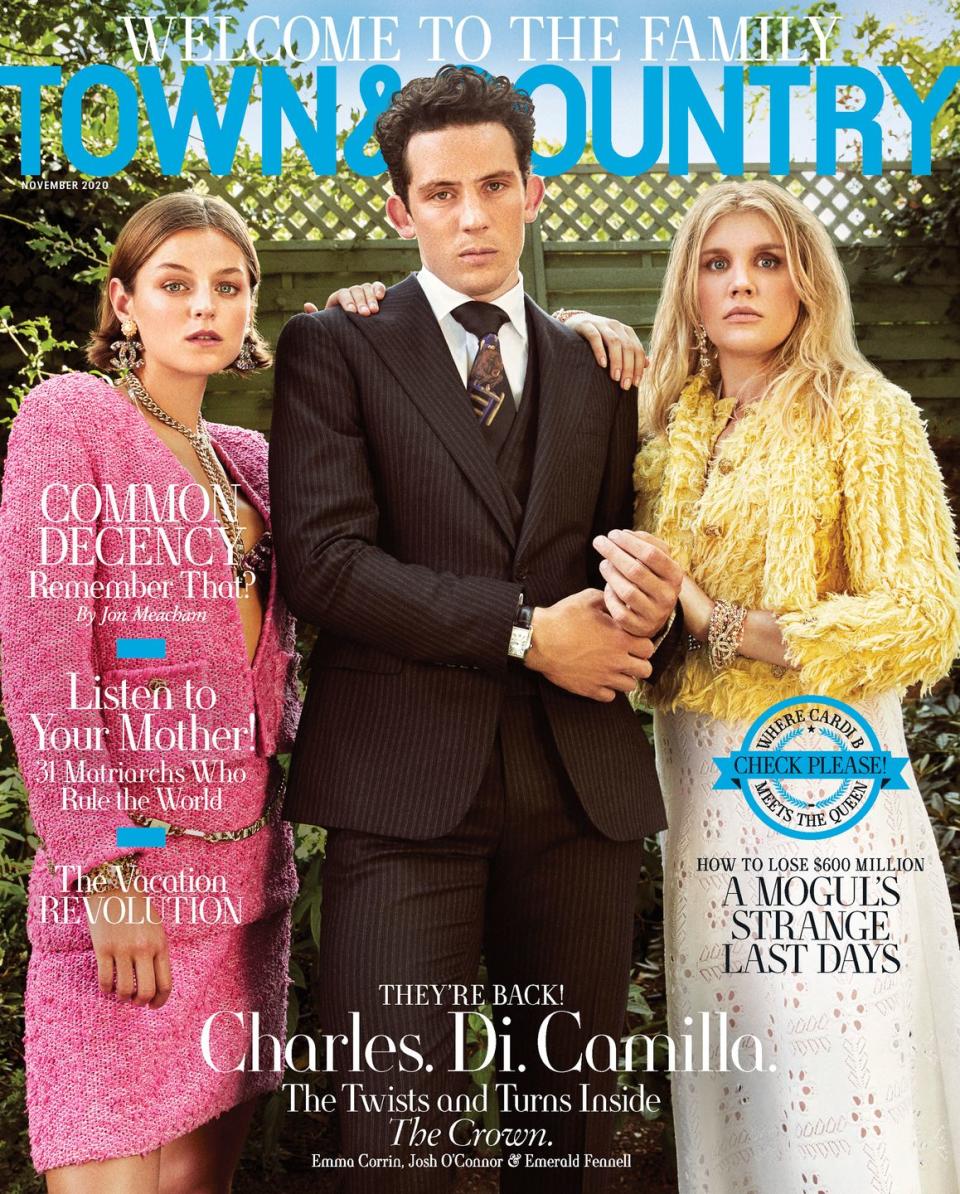
You Might Also Like


